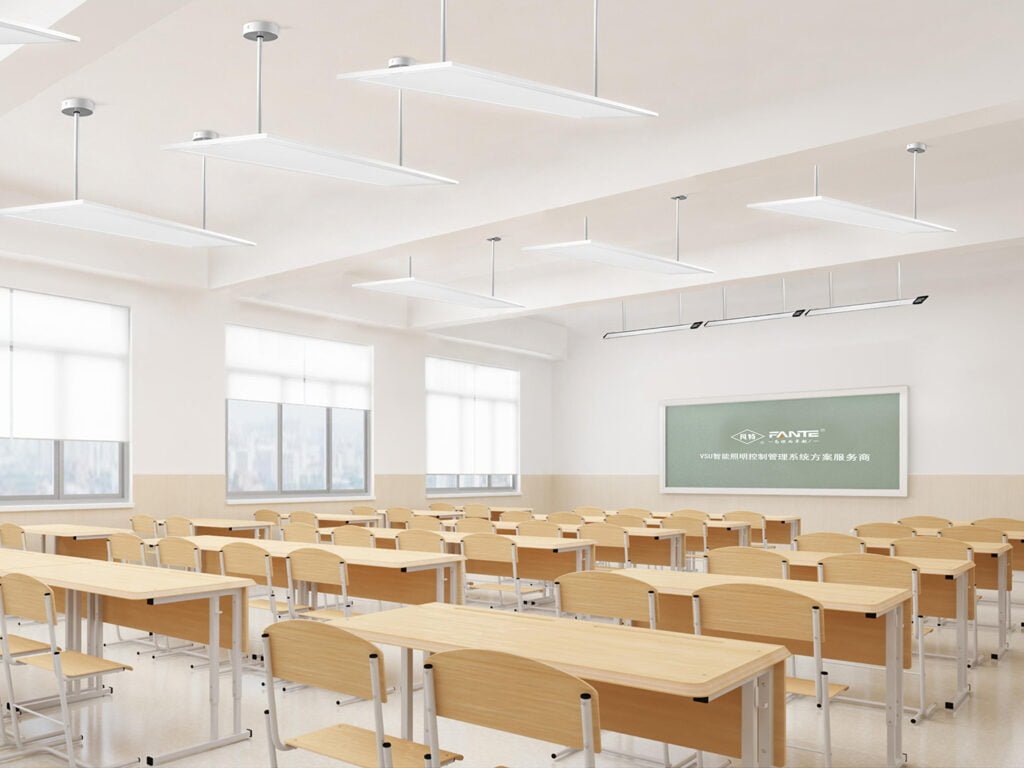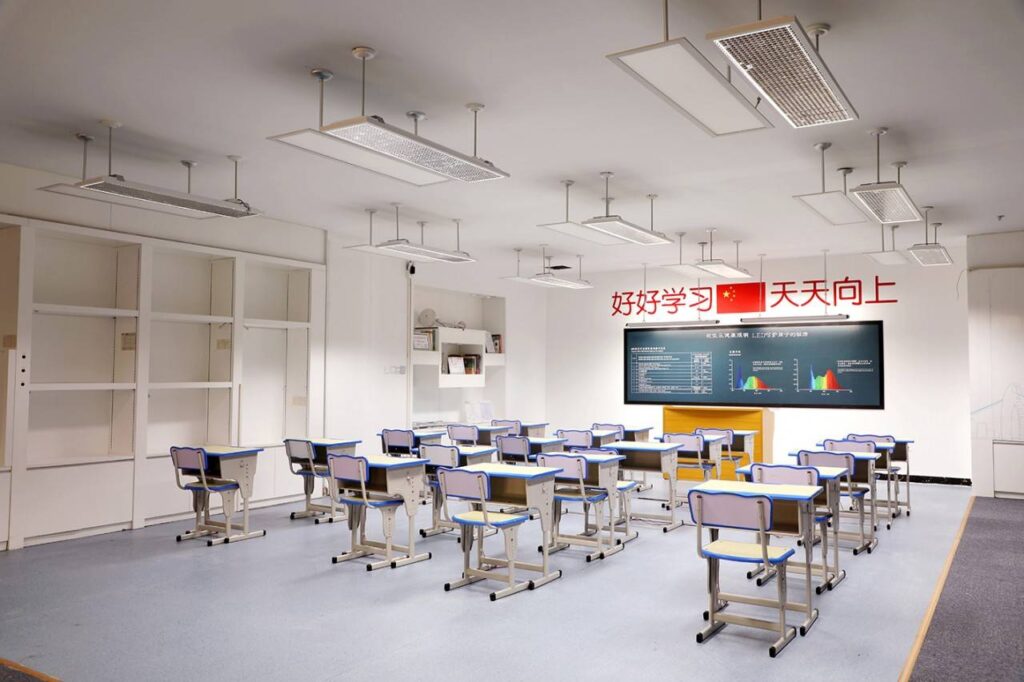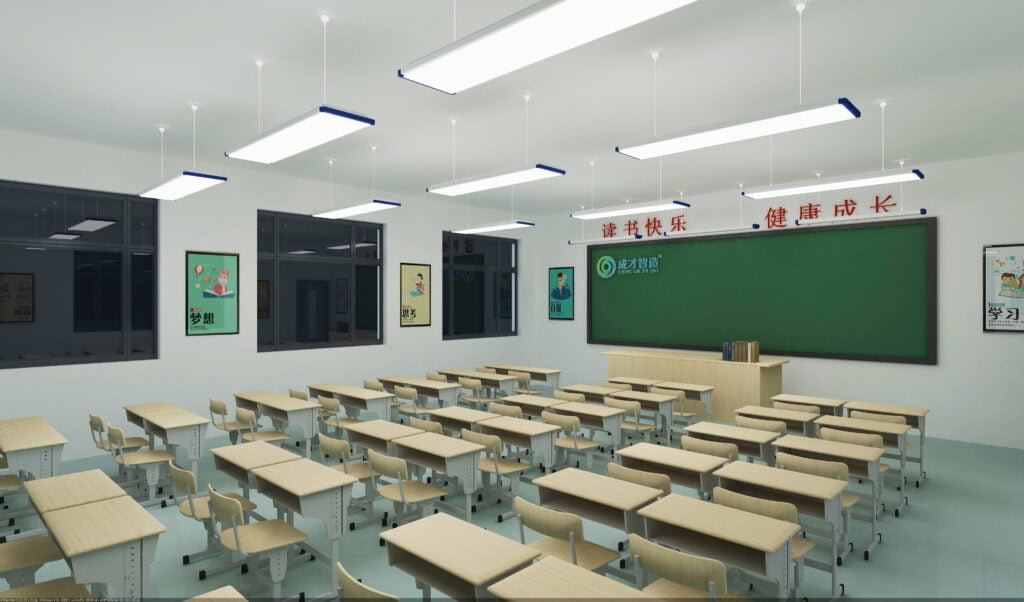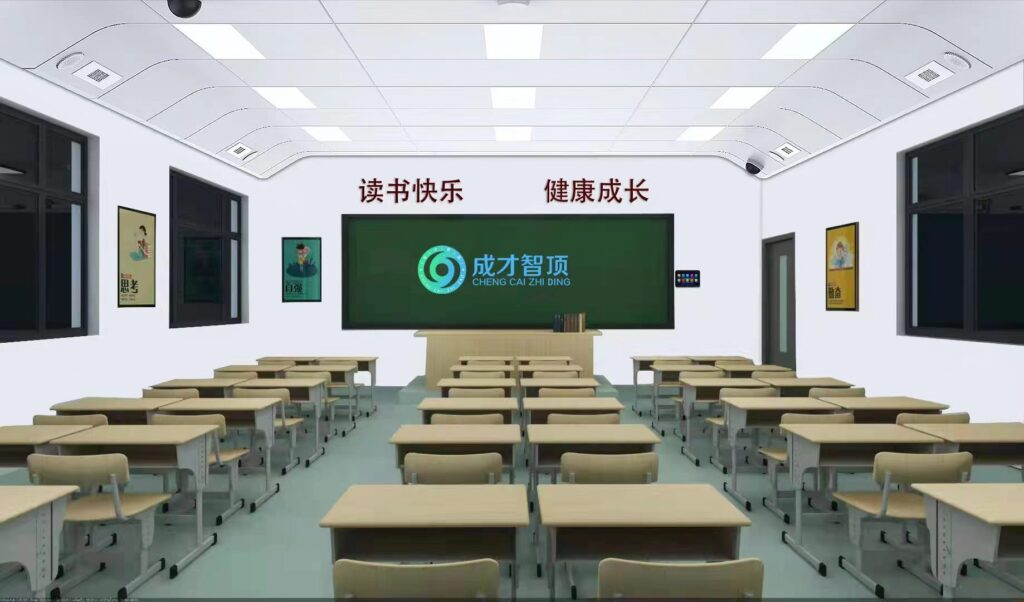Contact us for quotation
Let's have a chat
Let's have a chat
School’s in session again! Schools should draft their back-to-school checklist as students fret over their day-one attire and parents tally up supplies.
Considering LED lighting could cast your school in a brilliant new glow! It might seem unconventional to begin school improvements with lighting, but it can enhance student performance and the classroom ambiance.
Discover below how LEDs can benefit your school’s budget and amplify student achievement.

The primary function of lighting, especially in schools, extends beyond mere illumination. It plays a crucial role in determining the room’s visibility and influencing students’ emotional well-being, both pivotal in an educational setting. Suboptimal lighting can lead to issues like glare and reflections, which can strain students’ eyes, leading to fatigue and diminished focus during lessons. Conversely, a well-lit classroom can uplift students’ moods and increase productivity.
Optimal LED lighting systems are designed to minimize glare and prevent distracting reflections, ensuring students’ eyes remain comfortable, thereby aiding better concentration and learning. The temperature of the light is equally significant. Warmer lights can induce drowsiness due to their ability to stimulate melatonin production, a hormone responsible for sleepiness.
In contrast, more astonishing lights resemble daylight and inhibit melatonin production, energizing the body. This fosters heightened focus and alertness among students.
In essence, the lighting within a school not only shapes the ambiance of a classroom but can also profoundly influence students’ learning outcomes. Hence, its significance cannot be overstated.

The digital realm is replete with content highlighting the advantages and verified results of LED lighting in educational settings. One of the standout findings is the positive correlation between LED lighting and improved examination results. A U.S. research found that 84 third-graders reading in spaces equipped with specially calibrated LED lighting showcased a 34% enhancement in oral reading proficiency compared to peers in fluorescent-lit areas.
In a parallel investigation in Korea, a class of fourth graders was divided: one half experienced fluorescent lighting, while the other enjoyed LEDs adjustable to 3500K, 5000K, and 6500K temperatures. The outcome? Students under LED illumination achieved better academically under the 6500K setting and were more active during breaks with the 3500K setting.
Delving back to 1995, an initial exploration into full-spectrum lighting was undertaken. Observing a cohort of six-year-olds, researchers assessed their classroom behavior and monitored blood pressure fluctuations. Transitioning from conventional lighting to spaces with blue-hued walls and full-spectrum lights, there was a notable 1% drop in blood pressure and a 22% dip in distracted behavior.
Comprehensive research in Hamburg, Germany, focused on 166 students aged eight to 16 and 18 educators. Here, dynamic LED lighting was integrated into classrooms at the outset. Instructors could select four modes: standard, energy, concentration, and relaxation. This experiment yielded stellar results: the group witnessed a 45% fall in mistakes and a 75% reduction in restlessness and attention lapses when the relaxation mode was activated.
Recognizing the significance of lighting in schools, here are the essential factors to evaluate before illuminating an educational setting:
Luminance contrast denotes the variance in light reflection from the darkest and lightest objects or areas, especially given the diverse colors in a classroom setting. It’s crucial because it determines how well students can view whiteboards and blackboards. A blackboard-equipped room should maintain a 5-20% contrast, while rooms with whiteboards should have over 70%. Aim for a general classroom luminance of 25-40% to ensure a cozy atmosphere.

Measured in Kelvins, color temperature indicates the hue of light a source emits. For instance, LEDs under 3,000K warmly glow, while those above 4,000K produce an incredible, daylight-like shine. Remember, lighting affects our circadian rhythms. Warmer lights might induce sleepiness in students, whereas temperatures above 4,000K can enhance focus and alertness.
Ever noticed how some objects seem different indoors compared to outdoors? That’s due to variances in color rendering between natural and artificial light. Opt for LEDs with a CRI over 80% to emulate a natural light setting. They’ll depict colors most accurately, making classroom environments feel more natural.
The entirety of the classroom needs to get consistent lighting. Achieve this balance by choosing the right fixtures based on room dimensions and light positioning. Consider using fixtures like linear LEDs or Flat Panels for even fair distribution. Aim for a consistent lux rating of around 500 and ensure all classroom sections have comparable light intensities, ideally about 60-70%.
Clear visibility between teachers and students is paramount in a classroom, primarily as they often rely on lip-reading for more transparent comprehension. Your chosen lighting should minimize glare and ideally differentiate between the instructor and the board, enhancing visibility and engagement. Avoid diffused reflections, as these can dull the perception of faces and objects.
Avoiding glare is essential. Glare can diminish the effectiveness of a room’s illumination. Strive for fixtures and methodologies that minimize glare, safeguarding students’ eyesight. While a general glare rating hovers around 19, adjust according to the room’s function, ensuring more sensitive areas stay under this threshold. Consider anti-glare LEDs to tackle this issue proactively.
Schools employ various lighting solutions, both outside and within their classrooms. However, LED lights stand out due to their exceptional benefits. Here are the compelling reasons to prioritize LED lighting in educational environments:

While the initial investment in LEDs might be higher, they are undeniably more cost-effective and energy-efficient than alternative options. Schools can’t afford energy-intensive lighting that significantly elevates electricity bills. Traditional incandescent bulbs, for instance, are less durable and use around 75% more energy than LEDs. By transitioning to LEDs, schools stand to make considerable savings in energy costs.
Moreover, the longevity of LEDs ensures they last for several years, minimizing disruptions that bulb replacements could cause during class sessions.
Some educational institutions favor fluorescent lighting for its apparent brightness. However, this might be a misguided choice. Despite their luminance, fluorescent lights can disrupt students’ circadian rhythms, potentially causing health issues ranging from vision problems and concentration lapses to blood pressure fluctuations.
LEDs, in contrast, don’t carry these health risks. They offer flexibility, allowing schools to use excellent lighting in study zones and warm tones in relaxation areas.
Incorrect beam angles can lead to light sensitivity, manifesting in symptoms like double vision, eye irritation, migraines, and prolonged blinking. If students exhibit these signs, it’s an indicator that the lighting setup requires an overhaul. LEDs are an ideal solution, significantly reducing these concerns.
One of the objectives of school lighting is to foster an environment that reduces student stress. Conventional lighting, such as fluorescent bulbs, can raise cortisol levels (a stress hormone), affecting students’ well-being and sleep patterns. LEDs contribute to a more serene ambiance, aiding in managing students’ physical and mental health.
Prolonged exposure to traditional lighting can cause eye conditions like cataracts, macular degeneration, and corneal issues. Transitioning to LEDs can be a proactive step in safeguarding students’ visual health.
By this point, you’ve gathered ample knowledge about lighting within educational institutions. What is your next move? Determining the optimal approach to ensure schools are well-lit. Begin by pinpointing the specific lighting needs of each zone. This enables precise estimation of the wattage and the number of fixtures essential for various school zones. Also, factor in aspects like the color palette of interiors and writing boards.
Next, determine the optimal placement for fixtures to ensure consistent and even classroom illumination. Using classroom dimensions as your guide, select fixtures that fit. Afterward, choose the right color temperature, CRI, and wattage based on individual needs. Although numerous lighting options exist, LEDs reign supreme due to their shape, hue, and size versatility. Leveraging a mix of varied LEDs invariably yields optimal outcomes.
Remember, school lighting isn’t a solo endeavor. Engaging an expert electrician minimizes potential mishaps and prioritizes the well-being of educators and learners.
Ensuring schools and classrooms are sufficiently illuminated is a complex task. It demands thoroughly considering multiple elements to cultivate a conducive learning atmosphere. Chief among these elements is the choice of lighting – with LEDs emerging as the top contender. A deep understanding of fixture types and their light emission patterns is vital. We trust this guide has enlightened you on these facets.
As for top-tier LED products, MyLikeLed is your go-to. We produce superior LED strips and LED neon flex, all rigorously tested in state-of-the-art labs to guarantee unparalleled quality. Plus, we extend tailored solutions for our LED strips and neon flex. For the crème de la crème of LED offerings, reach out to MyLikeLed today!
We understand that every project is unique. That’s why we offer tailored LED strip solutions to meet your specific requirements.
Copyright © 2024 – My Like Led All rights reserved.
Let's have a chat